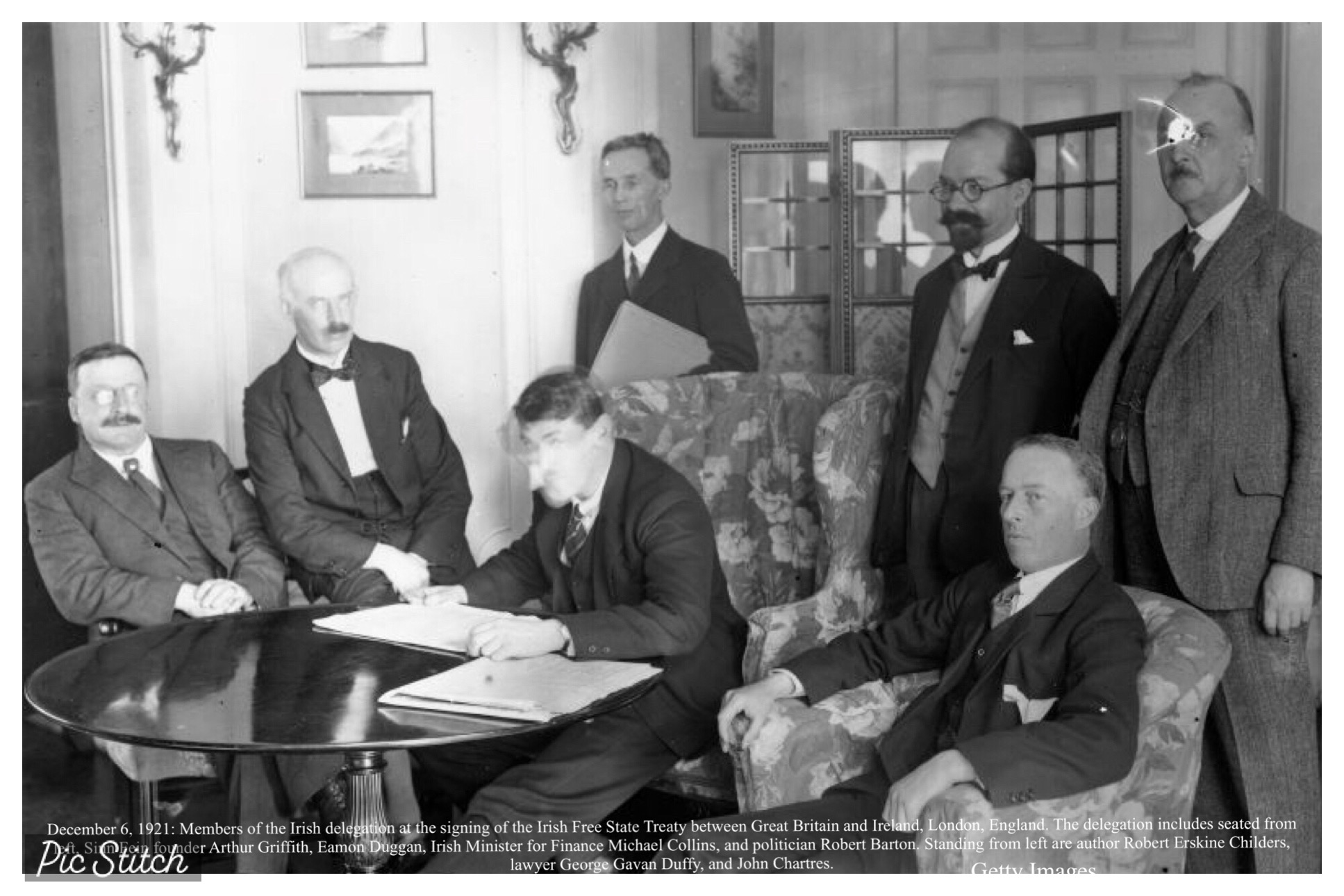6 December 2022 was the 100th anniversary of the establishment of the Irish Free State. The path to the Free State was fraught with peril. Ireland had been under foreign control since the Norman Invasion. Even after the Anglo-Irish Treaty was signed in December of 1921 there were many that opposed the treaty and the provisional government that ruled from January 1922 to December 6, 1922. So much so that the signing of this treaty led to the Irish Civil War from June 28, 1922 to May 25, 1923.
The Anglo-Irish Treaty was signed by British Prime Minister David Lloyd George and by Michael Collins and Arthur Griffith as representatives of the Irish Republic. The signing led to a split in the Irish Republican Army (IRA) because so many found the treaty revolting. This civil war led to 1,000 people dying including Michael Collins. The pro-treaty side ended up winning. But, what was in the treaty that caused so much turmoil?
The Anglo-Irish Treaty had three components that were fiercely opposed. The first was that Ireland would be a dominion of the British Empire like Canada and other countries. Next, that the King would have a role in approving Irish law. Lastly, that elected Irish government officials would have to take The Oath of Allegiance to the Monarch;
I (name) do solemnly swear true faith and allegiance to the Constitution of the Irish Free State as by law established, and that I will be faithful to H.M. King George V, his heirs and successors by law in virtue of the common citizenship of Ireland with Great Britain and her adherence to and membership of the group of nations forming the British Commonwealth of Nations.
The oath of allegiance was removed in 1932.
A few more facts about the first days of Ireland as a free state. Four Republican prisoners were executed for the murder of a pro-treaty government official. They were executed without even the pretense of a trial on December 8, 1922. The leader of the opposition Labour party, Tom Johnson, reported to the government that it had almost “killed the State at its birth.” Finally, for 24 hours on December 6, 1922 Ireland was United and independent. Then the parliament of Northern Ireland voted to opt out of the free state and return to the United Kingdom.
Ireland has been a land of many troubles. After becoming a free state in 1922 Ireland was still a dominion of the United Kingdom. In 1937 a constitution was adopted. The free state was called “Ireland,” effectively becoming a republic. In 1949, the Free State of Ireland finally officially became the Republic of Ireland.
We can help
If you need any help finding your ancestors, just let us know.


